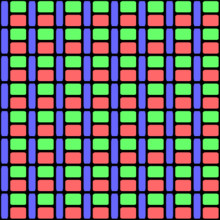
Most of the time, when we talk about display, we talk about the resolution, for example nHD (640*360), WVGA (800*480), qHD (960*540), HD (1280*720), and full HD (1920*12980). In other words, the number of pixels in your display is our interest. Higher pixel density means more pixels in the given area, and of course usually results in sharper display.
Pixel density usually is measured by pixels per inch (PPI). For your information, Galaxy S has a ppi of 233, S2 with 219ppi and S3 with 306ppi. IPhone 4, 4s and 5 all have a ppi of 326. Usually, when you hold your device 5 to 10 inches away from your eyes, most people cannot differentiate pixel density difference if the pixel density is higher than 300-400ppi. For a handphone, the ideal pixel density is about 300ppi; while for a tablet, around 250ppi is good enough for most users.
So, it is safe to say most high-end handphones in the market already have sufficient pixel density for normal users. Galaxy S4 will have a 441ppi display (if rumor is true, and usually is), which is slightly lower than that in HTC One (469ppi). This is far more than enough.
But most people do not know that the color representation on your display is more (at least equally) important. Whether the color is natural, whether the color is vivid, are easily identified by human eyes. For example, most people feel colors in Galaxy S, S2 or S3 are vivid, but not so natural; while on iPhone 4 or 5, it … Read the rest
